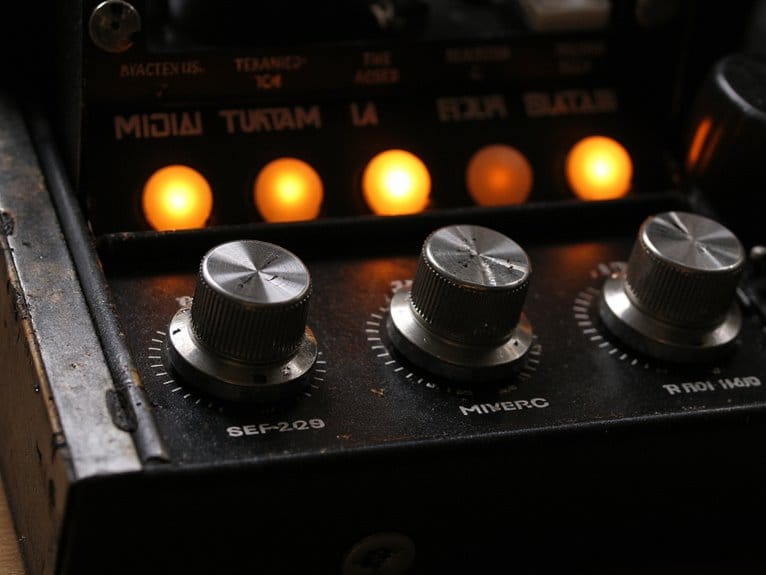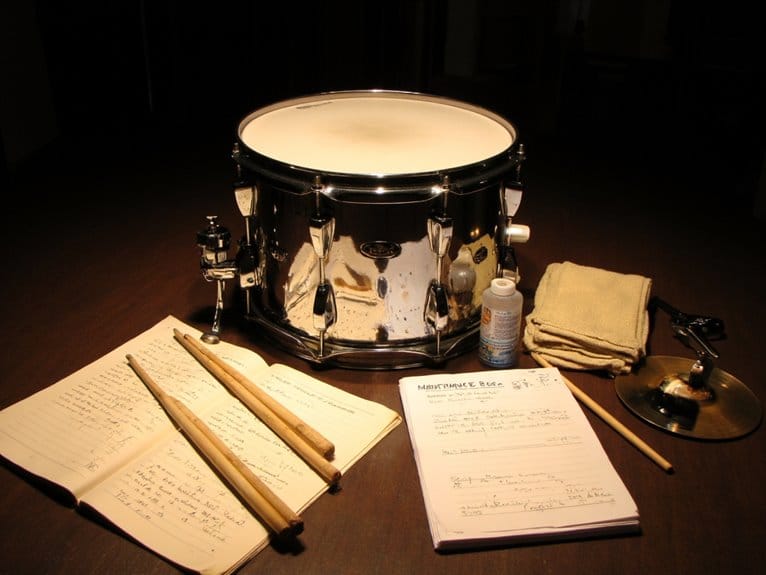What Mic Is Best for Drums?
For drummers, the best mic is a matter of tone, type, and terrain. Dynamic mics like the Shure SM57 and Sennheiser MD421 deliver a punchy, in-your-face sound, while condenser mics provide an expansive soundstage, perfect for capturing delicate cymbal work. Ribbon mics, like the Royer R-121, bring a warm, velvety tone to the table. But, it's not just about the mic – placement is key. Experiment with distance, angle, and room considerations to find the sweet spot. And, the right mic for the job can make all the difference – from snare to kick, tom to overhead, each drum has its ideal match. The perfect drum sound is just a mic away…
We are supported by our audience. When you purchase through links on our site, we may earn an affiliate commission, at no extra cost for you. Learn more.
Dynamic Mics for Drums
In respect to capturing the raw energy of drumming, dynamic microphones step up to the plate, delivering a punchy, in-your-face sound that's hard to beat. These rugged workhorses can handle high sound pressure levels, making them perfect for close-miking drums. The Shure SM57 and Sennheiser MD421 are legendary choices for snare drums, while the AKG D112 is a popular pick for kick drums. Dynamic mics excel at capturing the attack and decay of drums, producing a sound that's both aggressive and articulate. Plus, they're often more affordable than their condenser counterparts. So, if you want a sound that's bold, punchy, and unapologetic, dynamic microphones are the way to go. Just be prepared for a more focused, in-your-face sound that's sure to get your listeners' attention!
Condenser Mics for Drum Overheads
In respect of capturing the nuances of cymbal work and the overall drum kit ambiance, condenser microphones take center stage, offering a level of detail and depth that dynamic mics often can't match. When used as overheads, condensers provide an expansive soundstage, allowing each drum and cymbal to occupy its own distinct space. This is especially important for jazz, folk, and acoustic genres, where subtlety and nuance are key.
Four reasons why condensers shine as drum overheads:
- Delicate cymbal reproduction: Condensers accurately capture the intricate details of cymbal work, from soft whispers to loud crashes.
- Wide frequency response: Condensers can handle the full range of frequencies, from low rumbles to high squeaks.
- Immersive soundstage: By capturing the room's ambiance, condensers create an immersive listening experience.
- Flexibility: Condensers can be used in a variety of applications, from close-miking to room-miking, and even as spot mics for individual drums.
Ribbon Mics for Warm Tones
While condenser microphones excel at capturing the bright, airy nuances of drum kits, ribbon microphones bring a rich, velvety warmth to the table, making them an ideal choice for drummers seeking a more subdued, vintage tone. Ribbon mics achieve this warm, smooth sound through their unique design, which features a thin metal ribbon suspended between two magnets. This design reduces high-frequency response, resulting in a more mellow, rounded sound. Additionally, ribbon mics tend to be more forgiving of loud, dynamic sources, making them a great fit for drum recording. With their warm, cozy tone and ability to tame loud drums, ribbon mics are a great addition to any drum recording setup.
Mic Placement for Optimal Sound
Proper mic placement is crucial to capturing the ideal sound of your drums, as it can make all the difference between a mediocre recording and a truly exceptional one. Experimenting with different mic positions can help you find the sweet spot that brings out the best in your drums.
- Distance is key: Find the ideal distance from the drumhead to capture the perfect balance of attack and tone.
- Angle of attack: Experiment with mic angles to find the one that emphasizes the desired frequency range.
- Room consideration: Take into account the room's acoustics and adjust mic placement accordingly to minimize unwanted reflections.
- Drum-specific placement: Consider the unique characteristics of each drum and adjust mic placement to bring out its best qualities.
Best Mics for Specific Drum Types
When it comes to capturing the unique sonic characteristics of each drum type, the right microphone can make a significant difference, and understanding the strengths of specific mics is vital to bringing out the best in your drum sound. For instance, the Shure SM57 is a classic choice for snare drums, thanks to its ability to handle high SPLs and deliver a crisp, punchy sound. The Sennheiser MD421, on the other hand, is often preferred for toms, as its warm, balanced tone helps to bring out their rich, resonant quality. In terms of bass drums, the AKG D112 is a popular option, offering a robust, attack-heavy sound that cuts through the mix. By choosing the right mic for each drum type, you can create a more nuanced, detailed sound that brings your drum kit to life.
Budget-Friendly Mic Options for Drums
Tightening the purse strings doesn't have to mean sacrificing sound quality, as a range of budget-friendly mic options can deliver impressive results for drummers on a shoestring budget. You don't need to break the bank to get professional-sounding drums. Here are some affordable options that'll get you started:
- Shure SM57: A classic dynamic mic that's perfect for capturing snares and toms.
- Sennheiser e604: A versatile drum mic that's great for live performances and studio recordings.
- CAD Audio D28: A budget-friendly dynamic mic that's ideal for capturing deep, punchy drums.
- PDP 7A: A affordable condenser mic that's great for capturing cymbals and overheads.
These budget-friendly options will help you achieve great drum sounds without draining your wallet. Happy recording!





